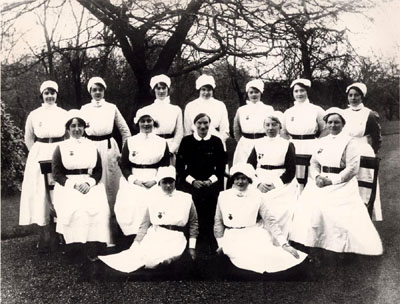
Nurses and matron at Belvidere Hospital, c 1890.
Glasgow Town Council built Belvidere as an infectious diseases hospital. It opened in 1870 with a bed capacity of 250 and 366 patients. Rebuilding and extensions continued until 1901. Belvidere remained primarily an infectious diseases hospital until after the creation of the National Health Service in 1948. Latterly it was a general geriatric hospital, before closing in 1999.
The nursing school at Belvidere acquired a reputation for producing nurses of a high calibre. The hospital had a large nurses' home with a separate room for each nurse, which proved an important factor in attracting "respectable" young women to work there. Comfortable living conditions provided some compensation for the dangers involved in working in a fever hospital - a number of Belvidere nurses died from diseases acquired from patients.
Reference: Heatherbank Museum of Social Work, print 6069
Reproduced with the permission of Glasgow Caledonian University, Research Collections, Heatherbank Museum of Social Work
Keywords:
Belvidere Hospital, bubonic plague, cerebrospinal fever, diphteria, encephalitis lethargica, fever hospitals, infectious diseases hospitals, matrons, nurses, poliomyelitis, smallpox, TB, tuberculosis, typhoid, typhus, women
You have 1 image in your photo album.